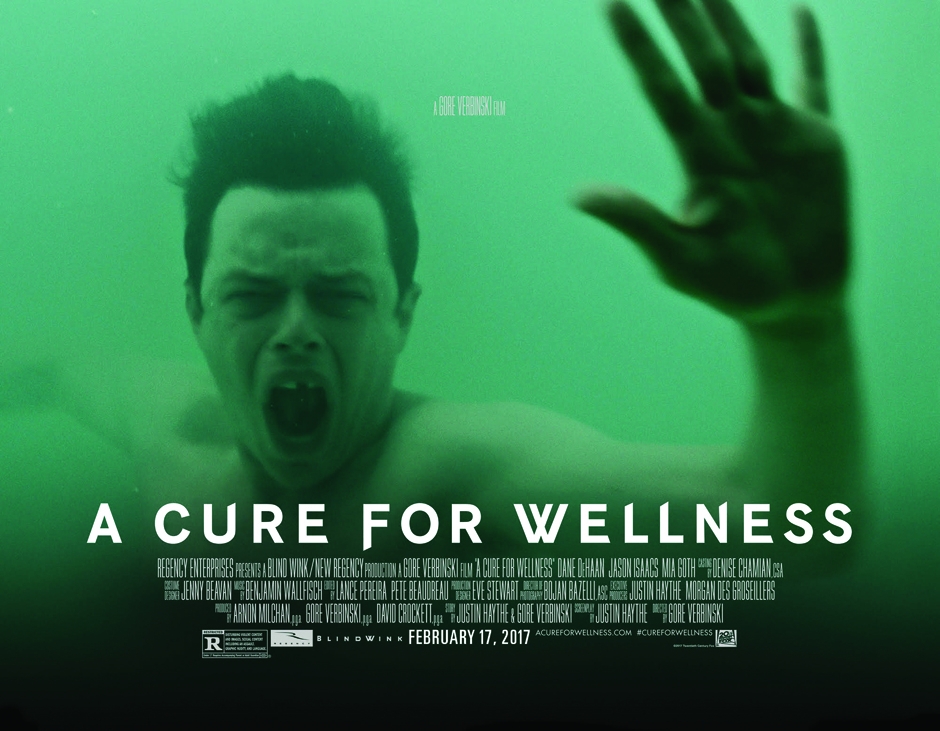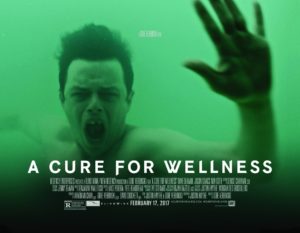

Water plays an important part in the film. The resort is built over an aquifer famed for having “healing” water, and many of the film’s scariest moments take place under or near water.
By Sean Ray | A&E Editor
Starring Dane DeHaan and Jason Isaacs, “A Cure for Wellness” is a psychological… actually, the second part of that is a bit difficult to describe. It’s not scary enough to be a horror movie. It doesn’t quite have the non-stop excitement needed to be a thriller. It lacks the usual trappings of a mystery to be one. So let’s just keep it to psychological for now.
“A Cure for Wellness” is a psychological film following a business executive named Lockhart (DeHaan,) who is sent to a remote health-resort in the Swedish Alps to retrieve the company’s CEO, who vanished at the resort after sending a strange letter. However, not is all that it seems: The resort holds a dark past, and many strange procedures are being performed on the patients there. Lockhart will need to battle both medical staff and his own sanity to find out the truth.
What perhaps will disappoint most people seeing “A Cure for Wellness” is how simple many of its aspects turn out to be. While the film has many stunning visuals and set pieces, it is not quite as mind-bending as the trailers make it out to be. It certainly comes nowhere close to films such as “Jacob’s Ladder” or “Eraserhead.”
Despite this, “Cure for Wellness” did keep me enthralled. Its plot takes plenty of twists and turns to keep viewers guessing, and the acting from the two leads is strong. Isaacs absolutely nails his role as Dr. Heinrich Volmer, the head of the resort. Never before has a seemingly calm and nice individual come across as so evil. And oh boy, does he do a lot of evil things.
The many tortures Lockhart undergoes simultaneously disgust and draw in audiences. Scenes where, normally, the director would cut away from to spare the audience are shown in full, painful view. A word of warning: Do not watch this movie if you’re afraid of dentists, and especially if you have a fear of eels.
“Cure for Wellness” does attempt to bring up points about the modern day plight. Lockhart has climbed the corporate ladder by sacrificing sleep, connections with family and has even broken the law. Many of the other patients there are much the same: business leaders who find themselves without true happiness. The resort is an idyllic escape, free of stress or work. While this does fall apart when the conspiracy behind everything is made evident, this message will strike a chord with many overworked Duquesne students.
What really holds the film back is its failure to commit. “Cure for Wellness” falls out of conventional genre labeling. Its feels, at times, like the film had three different directors with three different visions, and it does not do a good job at balancing those visions out. The mood swings from moment-to-moment, plot lines pop up and pass without much meaning and seemingly important characters vanish for long stretches of the film for no adequately good reason.
This results in a movie that just meanders around for much of its run time, going from set-piece to set-piece with only some loose strings to pull audiences long. While it manages to be entertaining, it does not leave a good taste in the mouth by the time it ends, so to say. I may have enjoyed my time with “A Cure for Wellness,” but I doubt I would watch it again, especially given its egregious run time of two hours and 20 minutes. It’s not helped by a scene that makes it seem like the movie was going to end there, but instead kept going.
Still, there is a bit of novelty to watching a combination of “Frankenstein” and “Shutter Island,” which is basically what “A Cure for Wellness” is. The film falls into a kind of middle ground for quality, neither really good or bad, just kind of average, with the only stand out being the visuals. Give it a watch if the trailers really intrigue you, though it might be better to wait for the cheaper DVD rental or inevitable appearance on Netflix. Otherwise, it’s safe to skip.



